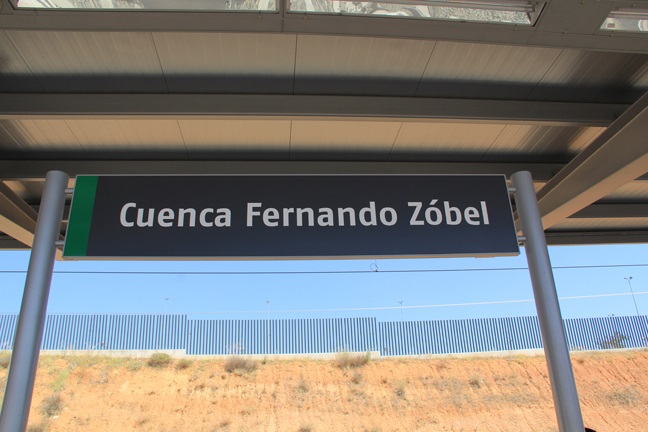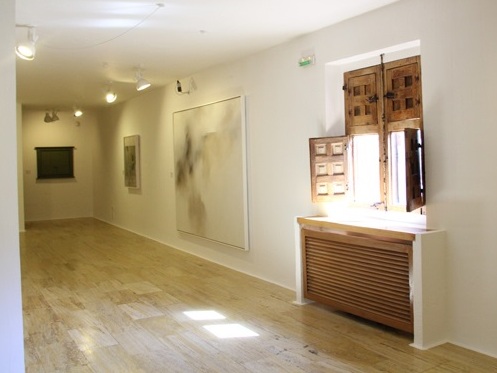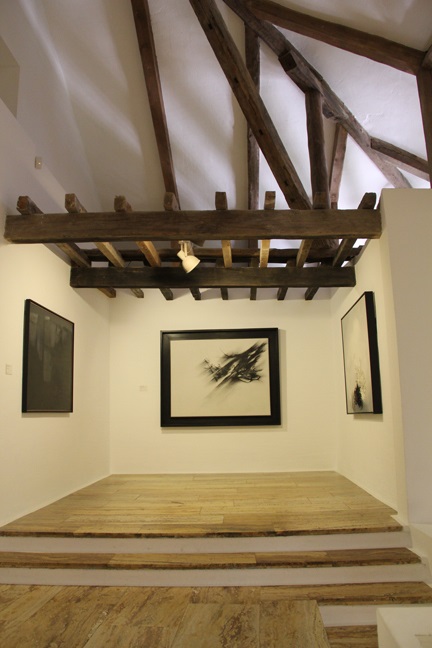
On a trip to Spain many years ago, I wandered into a small village, at sundown, where bricks with the patina of centuries evoked déjà vu.
In the deep recesses of my memory, I discerned that the small village I was walking through was reminiscent of a small street in the Ylocos, and I was on a summer break from grade school, in a sleepy town where Juan Luna was born.
The brick belfry rang the Angelus and I had to rush home for the prayers at sundown, where a very strict aunt was waiting for everyone at the altar for vespers.
The sight of bricks and the slow sonorous ringing of bells, at the end of day, induced a ghostly feeling in that quaint Spanish village, and I knew then that there are places worlds apart that beat with one heart!
There were more of these evocations of the senses during my first trip to Spain, when I was young.
After the lights of Puerta del Sol, after going through all the dark Goyas and many more Castilian artists in the dizzying, gigantic Prado in Madrid, and having been satiated with the best callos, the churros in Plaza Mayor, and the iconic cochinillo in El Botin, I ventured with my travel mate to explore one of the least known places for Filipinos in Spain—the Casas Colgadas in the old town of Cuenca.
We had gone to the tomb of Generalissimo Franco at the Valle de los Caidos, and had wandered through the labyrinthine chapels of El Escorial, the gardens of Aranjuez, and explored the street where Jose Rizal lived.
We attended a zarzuela in one of the old theaters along the grand boulevard. I rummaged through antique shops and found a small book on Ramon y Cajal, a revered neuroanatomist, an idol of mine during my early years in medical school and which helped shape my early aspirations to become a neurologist. To this day, I keep this book in my library.
Mario G
We wanted to see more of Spain. I looked for more places around Madrid, and the little town of Cuenca popped up on the map and immediately struck a very nostalgic chord in my memory.
Way back in old Ermita, before a mayor decided to wipe out all that was bohemian and colorful in that genteel enclave by the Manila Bay, Mario G, who came from an illustrious clan of diplomats, writers, historians and bon vivants, spoke to me about the works of Fernando Zobel. He said that Zobel bequeathed a lot of his artworks to Cuenca.
Mario was a gentleman of the old school, a cardiologist who was thoroughly European in temperament. I was his star pupil in cardiology and we edited the hospital scientific journal together.
He attempted to teach me classical guitar, but this stopped after his repeated bouts of gout which, I was sure, were due to all the wine we drank at the joints in Ermita.
He took me to Solidaridad, that wonderful bookstore cum antique shop, and also to the Philippine Art Gallery which was the home of the early moderns in Philippine art.
He was a good friend to the painter Vicente Manansala, whom he addressed as Mang Enteng, and he knew Zobel.
Cuenca, on the map, evoked memories of Mario G and our haunts in postwar Manila. The thought also brought back memories of Zobel and Cuenca.
Mario was my friend and soulmate, who exposed me to art in the late ’60s. He taught me that art was no mere decoration, but was integral to a well-lived life.
Cuenca and Zobel, art and the good life, converged.

Rio Huecar
From the Atocha train station, Cuenca is a 40-minute drive through provincial Spain.
The train stops in the new part of town which is uninteresting, but as one goes up the hill, on foot, the charm of this small city unfolds.
There are numerous gothic and Romanesque cathedrals, seminaries and charming cafés and jamon shops all leading up to the hills.
As one nears the long footbridge of San Pablo over the gorge, the heart skips a beat at the sight of the famous Las Casas Colgadas, a series of houses jutting out precariously on the steep defile of the granite wall of the Rio Huecar.
They were built in the 14th century and were used throughout the ages for many purposes. Today, these three houses with wooden balconies emerging from the rock, as if they were its extensions, now house the Museo del Arte Abstracto Español.
Zobel established the Museum of Spanish Abstract Art in 1966. He donated a large tome of his works to this museum.
The Casas Colgadas are the most striking edifices in medieval Cuenca.
There were children of gypsies begging for alms in front of the museum and several street artists from whom I bought a drawing of the Casas, now lost. But my memory of my visit to the museum is clear.

Unforgettable
In one room after another, the abstract art of modern-day Spain was displayed. As one went from one gallery to the next, the dizzying height of the granite walls when one peered down from the balconies made this museum visit an unforgettable experience.
On the walls hung works of the Spanish abstract artists, all friends of Zobel.
There were paintings and sculptures. Antonio Saura, Anton Tapies, Eduardo Chillida and others were curated sparingly on the walls. Some sculptures floated precariously in balconies, overlooking the ancient town of Cuenca and the rugged landscape beyond.
There was an extensive piece on Zobel published in Harvard magazine, written by John Seed, professor of art and art history at the Mt. San Jacinto College in Southern California.
He described the peripatetic life of this great artist from Manila, Madrid and Boston.
In 1946, Zobel graduated magna cum laude in Art Studies, History and Literature from Harvard College. In August 1951, he lived in Manila, where he led a “double life,” working with the Ayala companies while pursuing painting, writing, lecturing on art and archeology, traveling, exhibiting and collecting artworks.
He saw an exhibition of Mark Rothko while studying at the Rhode Island School of Design, which led to his delving into modernism. He became famous for his “Saeta” series, paintings inspired by devotional songs with links to flamenco.
He exhibited at the Philippine Art Gallery, collected the art of fellow Filipino artists, and taught at the Ateneo de Manila where he later donated some of his works. In 1960 he left the Philippines, cultivated friendships with fellow modernists in Spain, and together they put vigor into the abstract art movement.

Cafés
In 1963, he and his friends were “quickly entranced by the mood, lifestyle and the charm of the city of Cuenca and its inhabitants,” and they lived and worked there in medieval towers, regularly going down to the cafés where they discussed art, buoyed by Spanish wine.
In 1966, at considerable personal expense, he installed his growing collection of Spanish modernists, including his own, at Casas Colgadas, and the Museum of Spanish Abstract Art was born.
The people of Cuenca revere Zobel. Their train station is named after him.
Casas Colgadas is synonymous with Zobel, and his beloved town of Cuenca is now a Unesco heritage site.
It is definitely a place to visit in Spain: It is said that “not to visit Casas Colgadas is akin to not visiting the Eiffel Tower when in Paris.”
Modern-day Filipino art collectors are on the lookout for the artwork of Zobel in the auction houses. They pay premium prices to acquire a piece.
I go to the Ayala Museum to view his “Saetas,” black-and-white art pieces that project an “immense sense of calm.” For me, viewing one of them feeds the soul, akin to uttering a prayer.
“Saetas” remind me of my visit to Cuenca, and the patrician who graced the art scene in the Philippines when I was young.
A lingering question stopped me as we had paella for lunch on a meson overlooking the Rio Huecar. A room of Zobel in Manila’s National Museum would certainly advance the visual experience of Filipinos in abstract art. Were we timid to host him?
The train brought us back to Madrid for another round of cochinillo in one of my favorite restaurants in the world, Sobrino de Botin on Calle de Cuchilleros, a small street off Plaza Mayor. I’m quite sure that its specialty, cochinillo asado, inspired our own version, lechon, the centerpiece dish in fiestas all over the Philippines.
The cochinillo is mentioned in the closing pages of Ernest Hemingway’s “The Sun also Rises.” The artist, Francis de Goya, worked there as a waiter while waiting to be accepted at the Royal Academy of Fine Arts in Madrid.
On my last visit to El Botin, the lechoneros were Filipinos. One of them even came from La Loma!
The following day, we took the train to Barcelona, where I chanced upon a building along the Las Ramblas. It bore the name Tabacalera de las Islas Filipinas! I got excited because in the Ylocos where I grew up, there were tabacaleras close to home. And I knew that, in Barcelona, there would be more of these discoveries that would evoke more memories.
Indeed, there are many places worlds apart that beat with one heart.








































